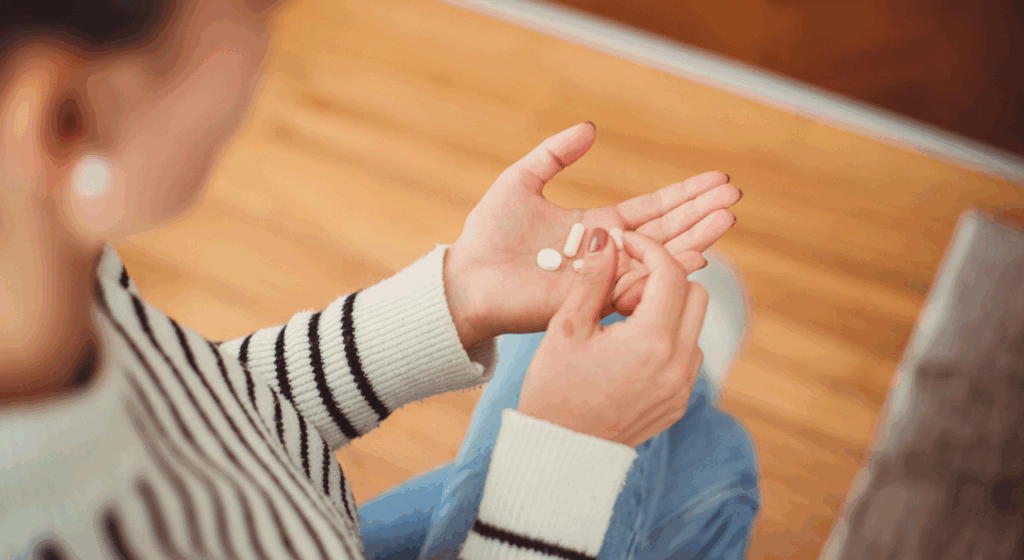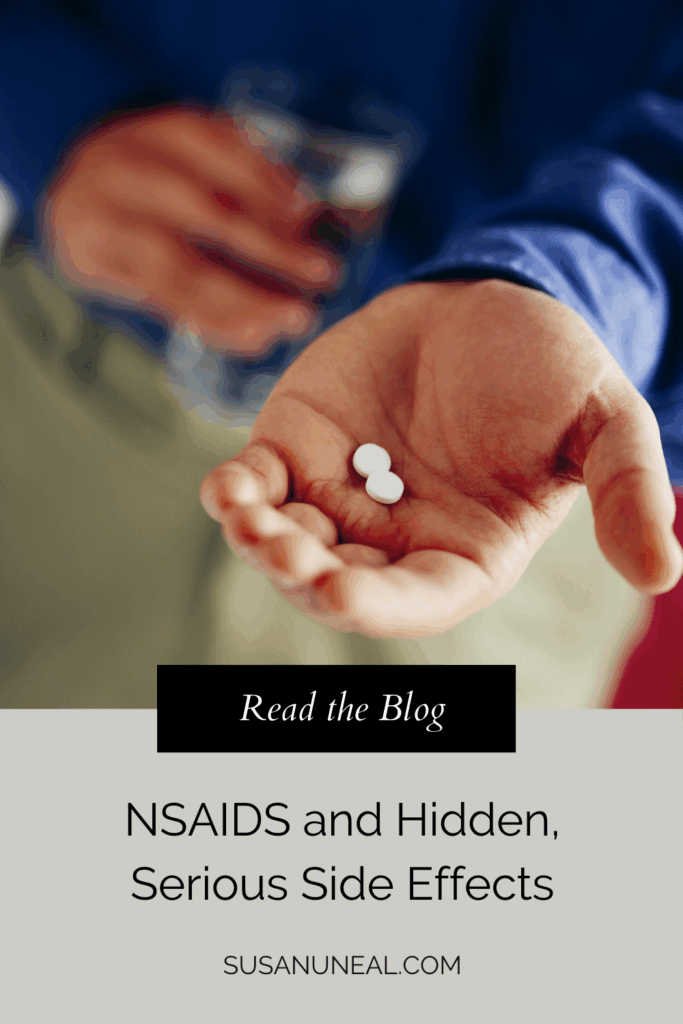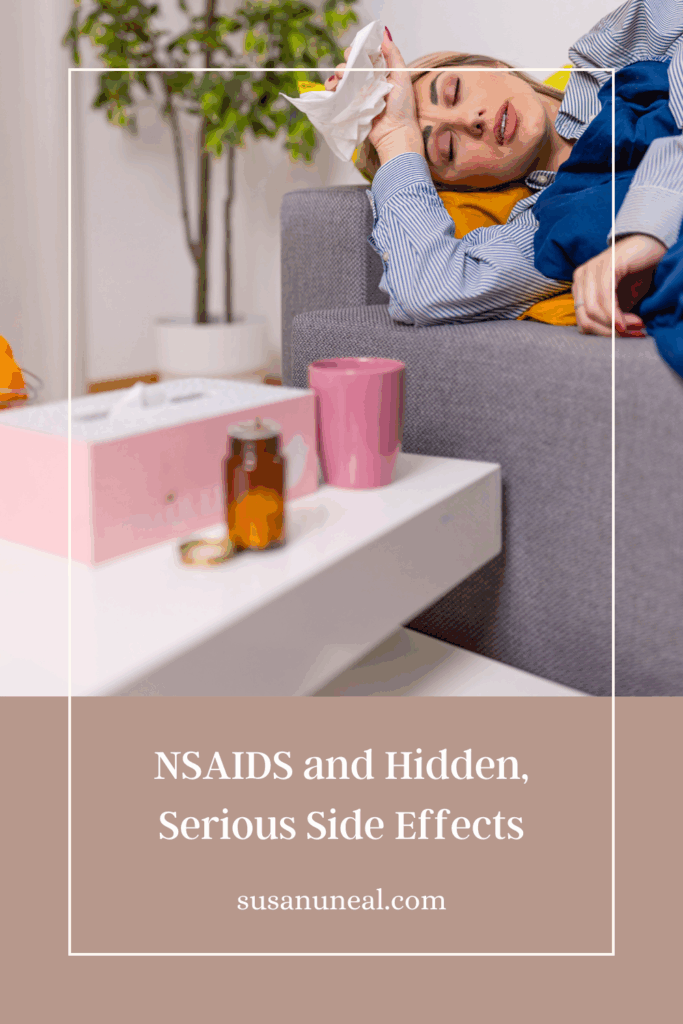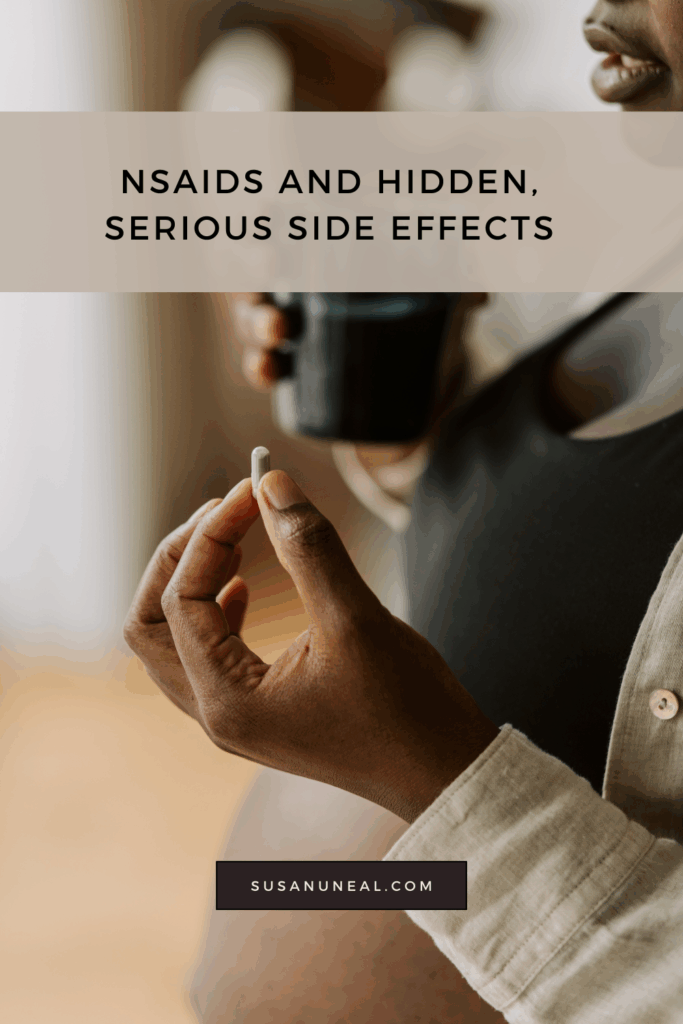NSAIDS and Hidden, Serious Side Effects
Broken trust. Broken body.
Extreme wording? Yes, but all too true after a diagnosis like mine.
Let me give you a brief background. Fourteen years ago, I suffered an injury to my spinal cord. In addition to that, I developed arthritis in many spots of my body. I was only forty-two.
Diet? Maybe, at least as far as the arthritis went. But I listened to my doctor and took the prescribed medication, so I could at least move around using a walker.

I took my medication and became increasingly sedentary, sluggish, and fat. Such a change from the slender woman I had been, who walked at least ten miles each week and was scrupulous about diet.
That was not the worst of it. I had no idea that something more harmful than the spinal cord injury was happening, while I faithfully swallowed the celecoxib prescribed by the pain specialist. And I did consider the side effects of this preferred treatment for arthritis, especially since I am an asthmatic with a family history of heart problems.
Serious Side Effects
- Heart attack: trouble breathing, chest pain, or tightness
- Heart failure: trouble breathing, tiredness, swelling in your body, and sudden weight gain
- Stroke: blurred vision, difficulty speaking, difficulty walking, and weakness on one side of the body
- Stomach or gut bleeds: blood in your vomit, stool that looks like black coffee grounds, and pain in your stomach that doesn’t go away
- Severe asthma attack: chest pain, cough, difficulty breathing, and wheezing
- Serious allergic or skin reactions: fever, body aches, cough, peeling skin, rash, painful blisters all over your body, trouble breathing, and swelling of the face
(https://www.goodrx.com/celecoxib/what-is)
The real issue is not listed here. The silent killer is completely absent from the list.
Fast forward to 2025. My pain doctor had retired. I was blessed to have a PCP who was willing to take over prescribing my pain medications, a doctor who had only taken me on as a patient a year or so before that.
Within that year, some significant changes had happened within my body. My naturally low blood pressure (usually 90/60) had changed. It rose, as my BUN level fell, and my creatin levels rose in my blood. Not a good thing. My kidneys were in trouble.
But why? How could my organs suddenly be damaged? I hadn’t felt it happening.
NSAIDS.
Recall the list of serious side effects for celecoxib. Kidney damage is not on it. Yet, medications like it and regular use of ibuprofen increase the possibility of irreparable organ damage.
Now they tell me!
A quick glance at the facts from the Centers for Disease Control’s 2024 report is alarming:
- More than 1 in 7 US adults—about 35.5 million people, or 14%—are estimated to have CKD.†
- As many as 9 in 10 adults with CKD do not know they have it.
- About 1 in 3 adults with severe CKD do not know they have CKD.
(https://www.cdc.gov/kidney-disease/php/data-research/index.html)
I had joined that group without ever being aware of my condition. Before I was diagnosed with stage two chronic kidney disease, I had already moved into stage three! It is one reason the disease is called the silent killer. A person does not feel ill during the initial stages.
According to the Cleveland Clinic, “You may not know your kidneys are struggling. Most people don’t have symptoms of kidney disease in the early stages. That’s why it’s important to attend annual wellness exams with your primary care provider to manage chronic conditions like diabetes or high blood pressure that can lead to kidney disease.”
World Kidney Day, an organization devoted to educating others about kidney health and possible dangers, has created an attractive image to outline symptoms of problems. I appreciate their efforts and am passing it on.
My specialist had failed me. He never once mentioned the possibility of kidney damage. I learned from the PCP that the cause of my condition had most likely been the celecoxib. Betrayed, that best described how I felt. I had trusted the specialist, and he had doomed me to a painful and silent killer.
Sadly, the kidneys do not heal, not like the liver. My damage is permanent. All I can do is change my diet.



Researching Natural Treatments
No, that is not all. I began to research. After learning which of my medications tends to harm the kidneys, I weaned off the drugs. This meant I had to find other ways to deal with pain.
I decided to take control of what went into my body. Healthy living is an important part of caring for the kidneys. The celecoxib is a thing of the past for me. So is the pantoprazole I took for long-time stomach issues since it harms the kidneys. Instead, I am focusing on natural remedies.
Since my childhood, I have struggled with stomach upsets. Now, I avoid tomatoes and tomato-based foods. Fried foods are a thing of the past for me, as well. When my stomach is upset, I turn to ginger or mint. Chewable ginger has made a world of difference for me. I also use fresh grated ginger in many of my recipes.
For years, I drank too much cola. Soda is something I weaned off of as soon as my kidney numbers showed a problem. I am still struggling to get off all sweets. It’s a work in progress, so to speak, since I enjoy honey much too much.
And did removing the cola from my diet help? Yes. My GFR (the predictor of kidney damage) numbers moved backward, toward stage one. You can be sure that healthy diet measures are in my future. Because of an allergy to wheat, I was already gluten-free. I know this has been another major help for my kidney health.
Sadly, improved numbers do not mean my kidneys are healing. Remember, kidney damage is not reversible. It simply means I am putting less stress on my organs.
So, I am spreading the word. I urge you to do research. Find out what hidden serious side effects are linked to the medications you take. Talk about those with your doctor. (Remember, do not stop taking a prescription without consulting your doctor!)
Live the best life you can by taking control of what you know!
About the Author
Marisa Masterson is an independent author. A retired teacher, she has published sixty-two sweet and suspenseful short novels. She lives in Michigan with her husband. Her five-year-old granddaughter keeps her active and moving each and every day, the best physical therapy she has ever had!
Discover more about her at www.marisamasterson.com.